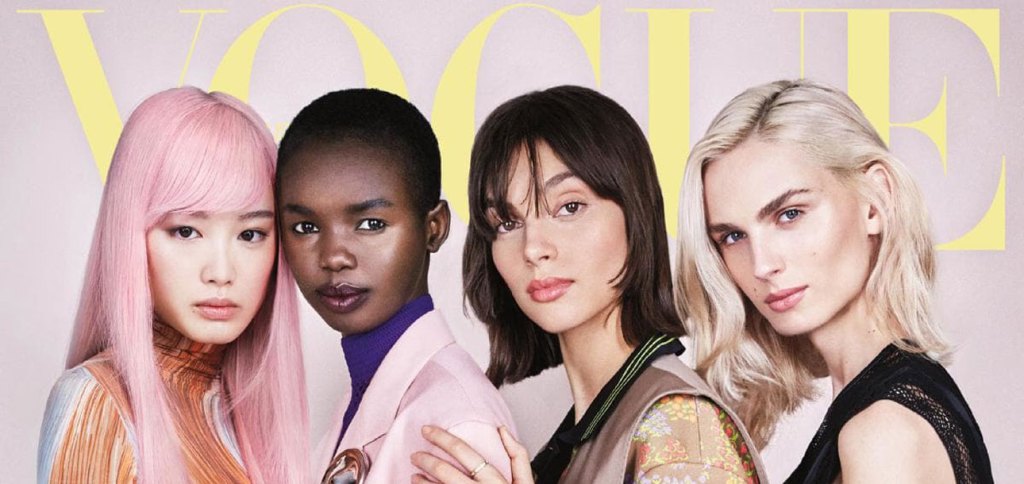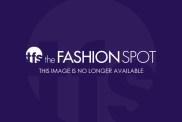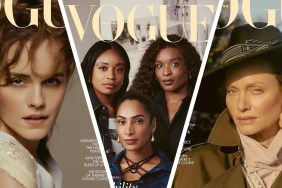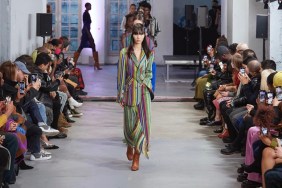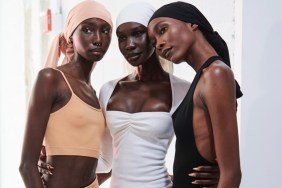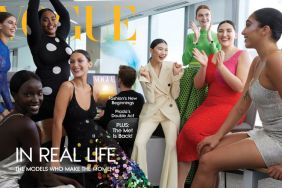Fashion has been notoriously slow to act on matters of inclusivity, but in 2018, it seemed the industry finally reached a point of genuine, palpable change. It was a record-setting year in terms of racial, size, gender and age representation on the runways and in ad campaigns. Telling of her experience watching the radically diverse Spring 2019 shows, The New York Times‘ Vanessa Friedman wrote, “Gone was the feeling I have had so many times in the past, that what I was seeing was merely gestural — a nod to a trend, or political pressure, soon to be forgotten when fashion turned its focus somewhere else.”
We’ve reached a special time in the industry where the consumer has more of a voice than ever before and is demanding to be represented, and fashion brands — apparel and media alike — can’t afford to ignore their calls. (Especially with print audiences dwindling, compelling publishers to think hard about what sells.)
Thus, we had a feeling the year’s magazine covers, which tend to outpace the runways and ads in terms of diversity, would tell a similar tale of ramped up consideration and inclusion. And indeed they do.
RACE
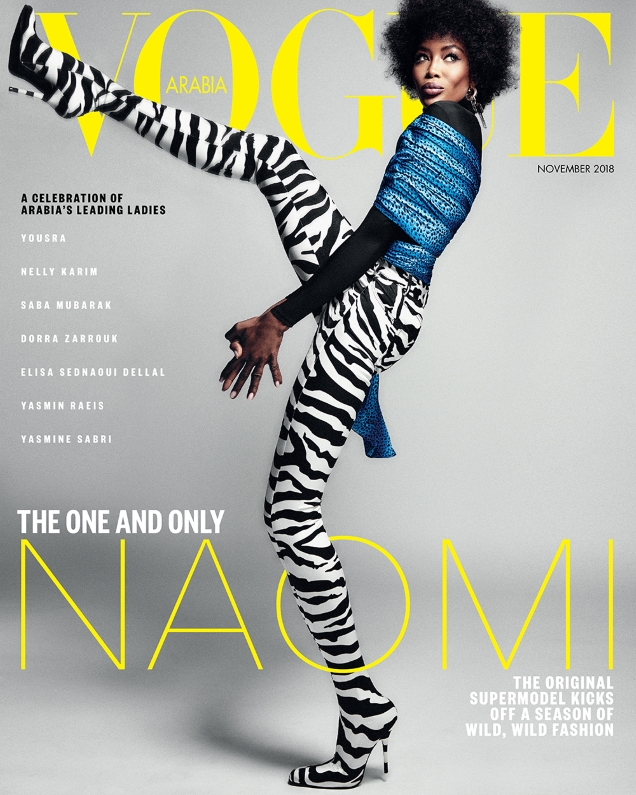
Of the 745 cover appearances we reviewed this year across 51 top domestic, international and independent fashion magazines, 281, or 37.7 percent, were people of color. That’s a significant — 5.2 points — jump from 2017, although not the highest increase we’ve seen in the five years we’ve compiled this report (between 2015 and 2016, racial diversity on magazine covers rose by a record 6.2 points, between 2014 and 2015, 5.4 points).
Nevertheless, it’s a landmark figure and puts the exclamation point on a year that saw significant strides on all fronts. To wit: 2018 was the first year in which the runways, seasonal ad campaigns and covers of leading fashion publications all passed the 34 percent racial diversity mark.
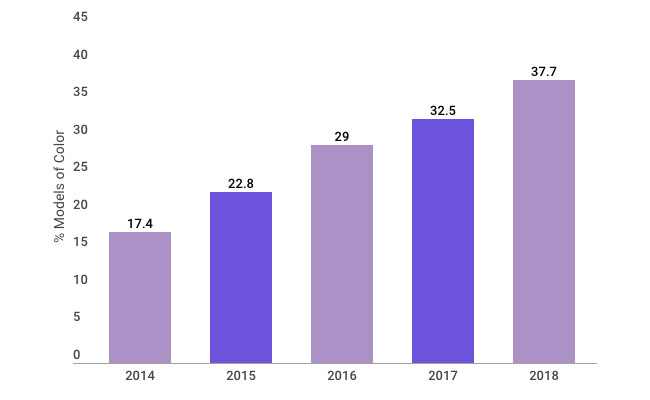
CR Fashion Book (100 percent) and Vogue Taiwan (100 percent) featured the most people of color — Vogue Taiwan for the fourth year running. These were closely followed by Vogue India (85 percent), Vogue Arabia (76 percent, as well as two plus-size women) and Allure (71 percent, along with two women over the age of 50).
Next came InStyle (67 percent, two women over age 50), i-D (64 percent, one plus-size woman, two transgender women), T: The New York Times Style Magazine (60 percent, six women over age 50), Glamour (55 percent, two plus-size women, one woman over age 50), Vogue Korea (53 percent) and Vogue U.K. (52 percent, one plus-size woman, two women over age 50). We’d like to take a minute to spotlight Vogue U.K., which under the stewardship of Edward Enninful has done much to redress its shameful legacy of exclusion. Before 2017, the mag went 14 years with only six nonwhite solo cover stars; in 2018 alone it featured 12 out of 23 nonwhite cover stars, including Rihanna, Oprah Winfrey, Adut Akech, Halima Aden, Selena Forrest and Yoon Young Bae.
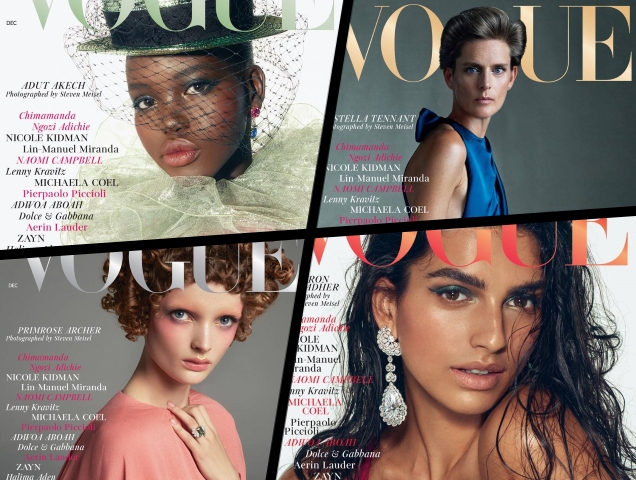
Rounding out the most-diverse list are Harper’s Bazaar (50 percent, one woman over age 50), Dazed (50 percent, three plus-size women, one woman over age 50, one trans woman) and Teen Vogue (50 percent, one plus-size woman). Editorial shake-ups notwithstanding (in 2018, first Elaine Welteroth, then Phillip Picardi resigned as editor-in-chief; Lindsay Peoples Wagner now leads the brand), the latter hasn’t lost its focus on social consciousness.
That said, several other Vogue offshoots were sorely lacking in diversity, the worst offenders being Vogues Russia and Czechoslovakia, which hired zero of 13 and zero of five nonwhite cover stars, respectively. Vogue Paris, arguably one of Condé Nast’s more prominent international titles, featured only one nonwhite cover star, Naomi Campbell, out of 13 (8 percent)! To be fair, the monthly did feature one over-50 cover star, the legendary Jane Birkin.
We’re not done: Vogue Turkey (7 percent), Vogue Ukraine (8 percent), Vogue Poland (13 percent) and Vogue Spain (13 percent) also put forth startlingly whitewashed covers. And for the second year running, L’Officiel and Marie Claire U.K. made it to the bottom nine, booking only 2 out of 23 (8 percent) and 1 out of 12 (9 percent) nonwhite cover stars, respectively. Of course, that’s still an improvement on 2017 when both hired exclusively white, cisgender, straight-size cover stars. At least this year, L’Officiel gave Ashley Graham her due.
PLUS-SIZE
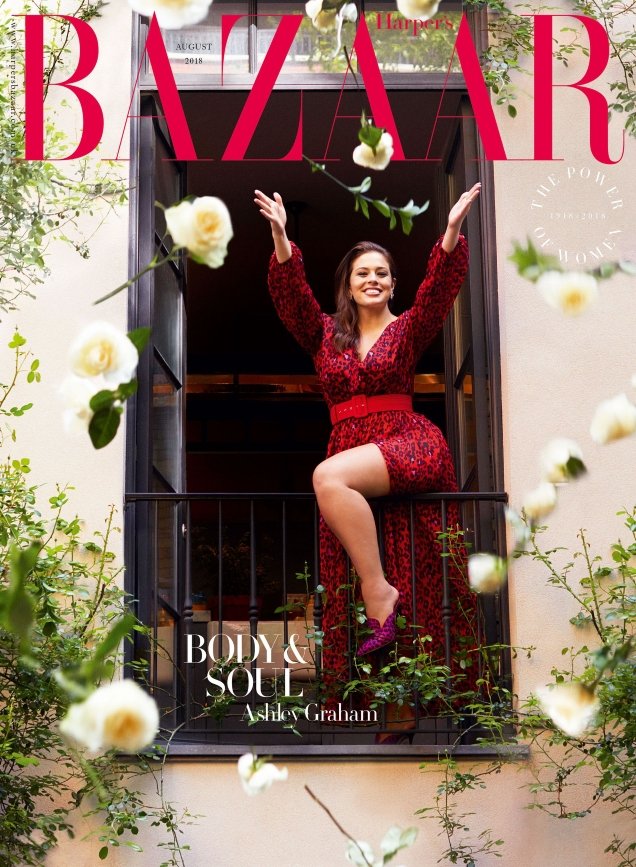
Speaking of which: women size 12 and over also saw significantly more representation this year than in years past with 18 cover stars in the category. That’s 10 more than in 2017 and triple the six we saw in 2016.
Still, publishers could clearly do more to prioritize size inclusion: 18 non-straight-size cover stars in a group of 745 means that only 2.4 percent of this year’s covers were size diverse. (For reference, 2017’s eight non-straight-size frontwomen appeared on 1 percent of that year’s covers, 2016’s six, 0.9 percent.) None too impressive and yet better than the most recent runway and ad campaign stats: the Spring 2019 shows featured 0.73 percent “plus-size” models; the Fall 2018 ads, 1.3 percent. Of course, while these figures do read as paltry, it’s important to remember that size diversity is up across the board.
As far as titles go, Dazed featured more size diversity than any other publication. The Isabella Burley-led mag tapped three non-straight-size women — including artist and GUT magazine co-founder Ami Evelyn Hughes and model, photographer and body-positivity advocate Emma Breschi — for its five-cover “Youth in Revolt”-themed summer edition.
Before announcing in November that it would be ending regular print publication, Glamour did its part to put size-inclusive fashion images on newsstands: Melissa McCarthy fronted the glossy in May; Chrissy Metz (and her This Is Us co-stars) covered the November issue.
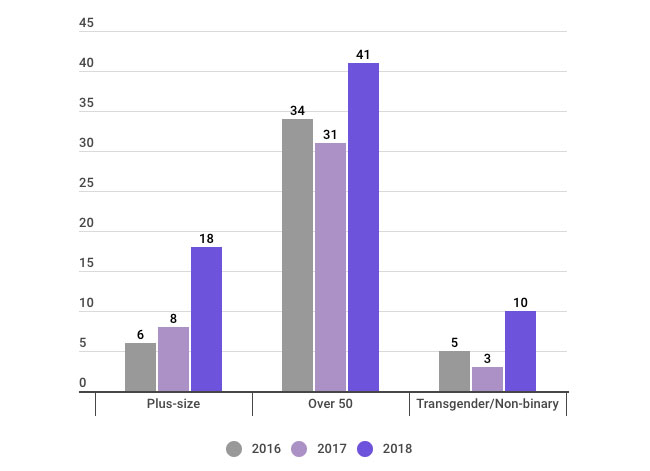
Oprah landed the most covers with four in total, followed by modeling powerhouses Ashley Graham and Paloma Elsesser with three apiece. In July, the duo shared the cover of Vogue Arabia (the issue focused on spreading the message that “beauty has no size”). In August, Graham fronted Harper’s Bazaar U.K.; in October, Paris-based monthly L’Officiel. As for Elsesser, she was one of eight models shot for i-D’s multi-cover spring issue (dubbed “The Radical Issue”) and one of the nine “models changing the face of fashion” photographed for May’s Vogue U.K.
Looking at intersectionality, 10 of the 18 size-inclusive covers went to nonwhite women. This year had no plus-size, openly transgender cover stars, although Lizzo, in her Teen Vogue interview, professed, “When it comes to sexuality or gender, I personally don’t ascribe to just one thing.” (Note: In the interview, writer Phillip Picardi refers to Lizzo using female pronouns, thus we assume she doesn’t self-identify as just non-binary, either.)
AGE
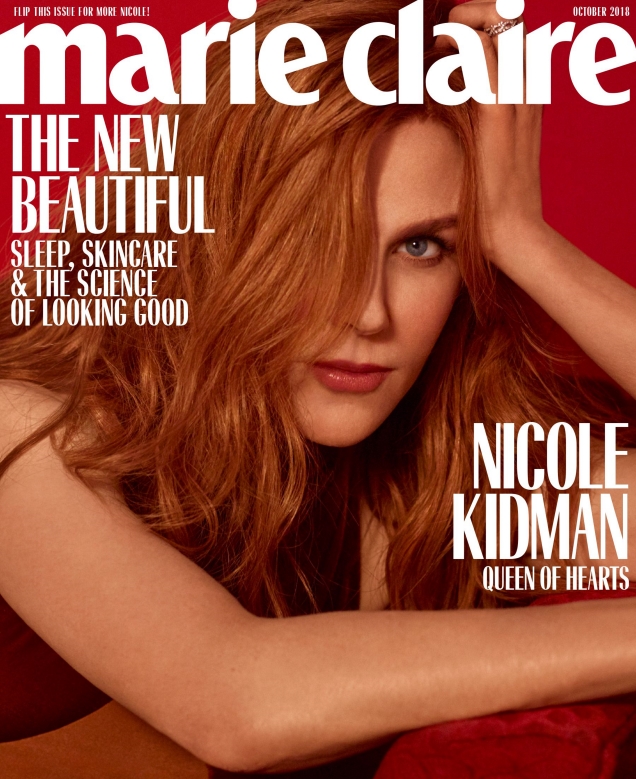
As is typically the case with magazine covers, women over the age of 50 were the best represented of any category outside of race. After two years of remaining mostly stagnant — in 2016, 34 of 679 cover stars were over the age of 50, in 2017, 39 of 782 were; in both cases, that’s about 5 percent — in 2018, the number of cover stars in their 50s, 60s or above increased slightly. Of the year’s 745 cover stars, 41 (5.5 percent) were age 50 or above. That’s only a 0.5 percent bump, but an improvement nonetheless.
Once again, these figures are far more encouraging than the corresponding runway and ad campaign stats. Generally speaking, runway models over the age of 50 tend to be overlooked: for Spring 2019, they made up only 0.36 percent of castings. And while the seasonal ads are usually more age-diverse than they are gender- or size-inclusive, women over age 50 appeared in only 3.4 percent of Fall 2018 ads. But again, progress is progress and this year we saw growth, however minimal, across the ever-less-ageist board.
Per usual, Nicole Kidman, 51, fronted the most covers of any woman in her age group, posing for Allure, Marie Claire, Vanity Fair, Vogue U.K. and W. The inimitable Oprah Winfrey, 64, came in second, covering InStyle, Vanity Fair, Vogue U.K. and WSJ. Magazine. Angela Bassett, 60, landed both Allure and ELLE’s November covers. Cindy Crawford, 52, fronted Vogues Turkey and Spain; Kylie Minogue, 50, Vogues Spain and Australia. French filmmaker Agnès Varda, 90, covered The Gentlewoman’s 18th issue as well as Interview’s almighty September edition (its grand relaunch). The rest of the set — which includes legends like Viola Davis, Salma Hayek, Michelle Obama, Madonna and Mia Farrow — landed one cover apiece.
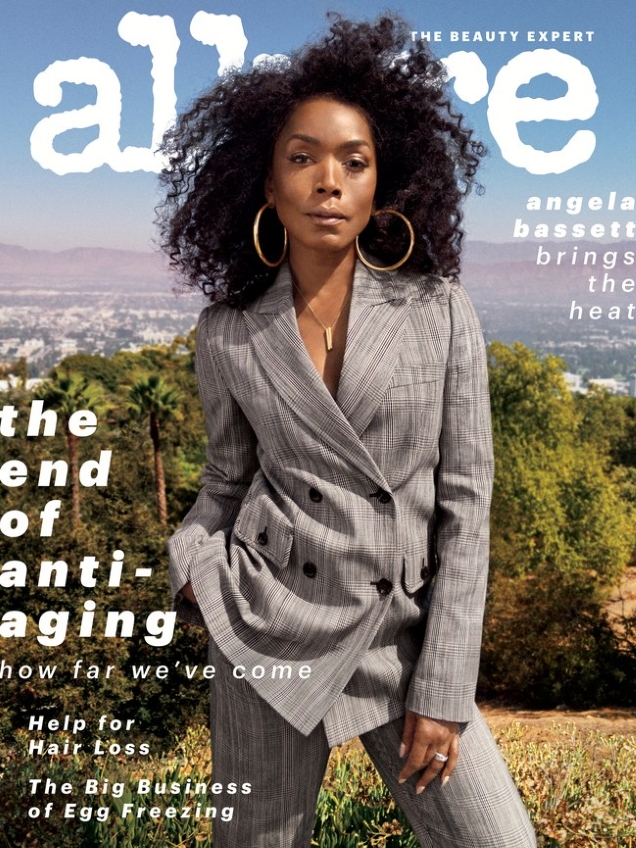
As one might expect given their readership, it was news and lifestyle publications like T: The New York Times Style Magazine and WSJ. Magazine that cast the most over-50 women. T hired six in total: its Women’s Fashion Issue, which hit newsstands in February, starred American feminist artist Judy Chicago, 79, and Japanese-American model and actress Jenny Shimizu, 51; its April 22 Culture Issue, which focused on New York from 1981 to 1983, featured Carolina Herrera, 79, Jennifer Beals, 55, and Kim Gordon, 65; its six-cover The Greats Issue, released in October, spotlit American artist Carrie Mae Weems, 65. Meanwhile, WSJ. Magazine hired four: Winfrey fronted its March fashion issue; in November, 50-something journalist Nonny de la Peña, philanthropist Agnes Gund, 80, and costume designer Ruth E. Carter, 58, made the glossy’s widely-renowned innovators list.
TRANSGENDER/NON-BINARY
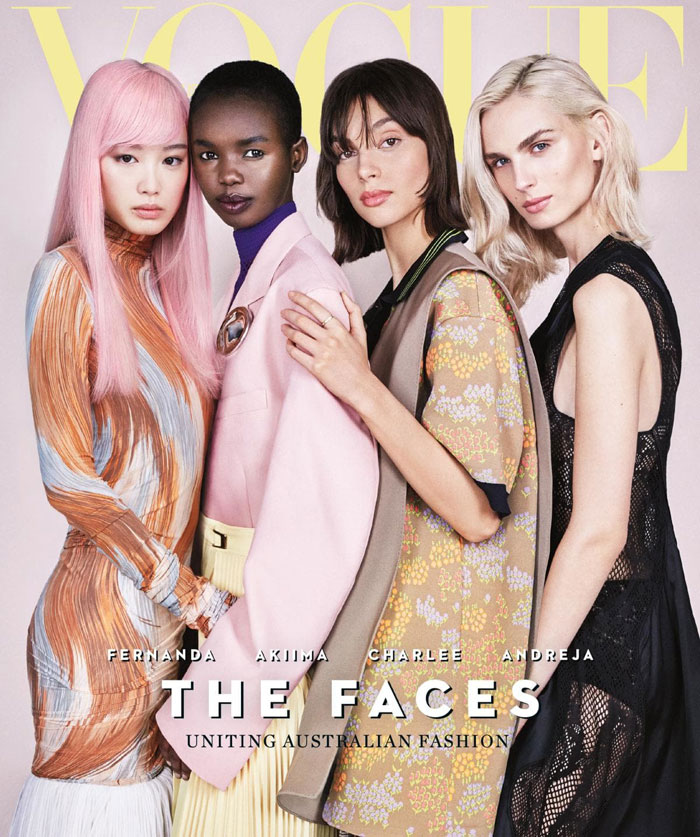
This year marked a new level of inclusivity for the LGBTQ+ community: more openly transgender and non-binary models and celebrities were featured on magazine covers since we first started tallying the numbers in 2016. That said, they remained the least represented group.
Of the 745 cover appearances we tracked, 10 (1.34 percent) featured an openly transgender or non-binary person. That’s double the number seen in past years: 2017 had only five trans/non-binary cover stars (appearing on 0.64 percent of that year’s covers), as did 2016 (on 0.74 percent of covers).
In regards to transgender/non-binary representation, 2018’s magazine covers were just about on par with the latest crop of runway shows and fashion ads: 1.23 percent of Spring 2019 runway castings went to trans or non-binary models (an all-time high for the industry); 1.1 percent of Fall 2018 campaign stars belonged to the category (the second-highest percentage we’ve seen to date). Again, going by the numbers, it’s apparent that editors, designers and advertisers are (at the very least) attempting to understand and tackle fashion’s gender diversity problem.
What’s more, the tokenism that was rampant in years past — Hari Nef landed four out of five of 2016’s trans/genderqueer covers; Valentina Sampaio and Amandla Stenberg dominated last year’s list — was not an, ahem, issue this year. This year’s 10 gender-inclusive covers featured 10 different models/pop culture personas. Transgender actress Daniela Vega shared W‘s Volume 1 cover with Robert Pattinson; Andreja Pejic posed alongside Akiima, Charlee Fraser and Fernanda Ly for Vogue Australia’s April cover; Ariel Nicholson helped fête LOVE’s 10th anniversary; Teddy Quinlivan and Dara Allen landed two of i-D’s eight Spring 2018 covers; up-and-comer Slid Needham appeared on Dazed’s protest-themed summer edition. Miss King, the only non-binary model/artist to nab a major cover, fronted the July/August edition of Jalouse.
Now to single out Paper, which wins for the most gender-inclusive fashion media brand of the year. In 2018, the internet-breaking indie mag hired three transgender musicians as cover stars: Sophie Xeon, Big Freedia and Teddy Geiger. Xeon and Big Freedia fronted the mag’s June Pride issue; in November Geiger (aka Teddy<3) helped introduce the brand’s new digital cover series dubbed “Takeover.”
As for the publications that embraced multiple forms of diversity: W, i-D and Paper each hired one nonwhite trans cover star (Vega, Allen and Big Freedia, respectively); Paper one non-sample-size (though not technically plus-size) trans woman (Big Freedia).
TOP MODELS
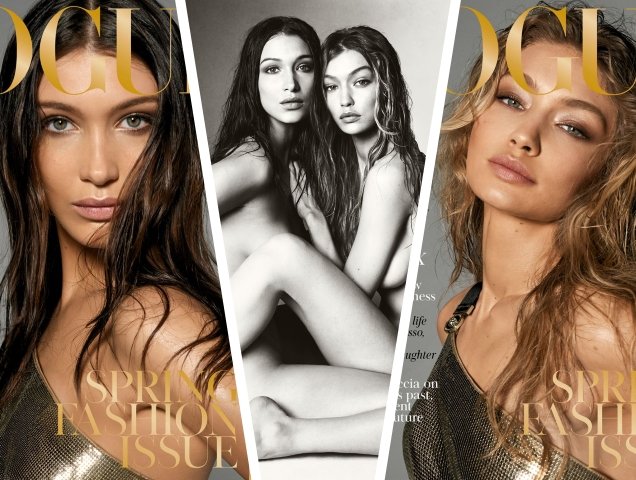
Discouragingly, despite all this progress, only three of 2018’s seven most-booked cover stars were women of color, two of them being the admittedly white-passing Hadid sisters — a stark reminder that fashion media’s capacity to embrace minorities is still very limited.
American-Dutch-Palestinian model Gigi Hadid racked up the most covers of the year — 11, including CR Fashion Book, LOVE, Harper’s Bazaar, V Magazine, W and several international Vogue editions (Australia, Brazil, Germany, Japan, Italia, U.K.).
Grace Elizabeth and Luna Bijl shared second place with eight covers each. Kendall Jenner, Margot Robbie, Bella Hadid and British-Ghanaian model Adwoa Aboah walked away with six covers apiece, tying for third. Per tradition, no transgender, non-binary, plus-size or over-50 models made the top seven.
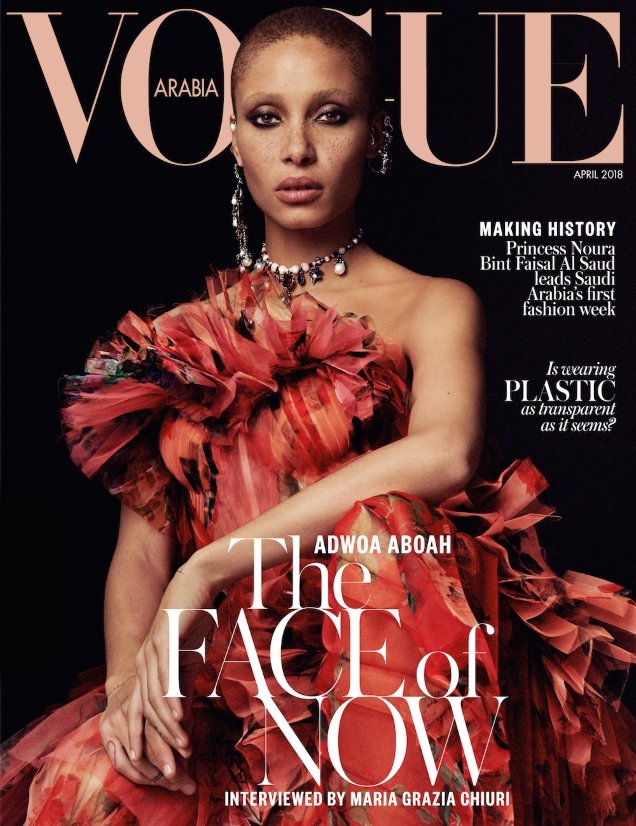
NOT THERE YET
Despite the fact that size and gender representation on magazine covers multiplied, despite the fact that our racial and age diversity numbers continue to climb steadily, there remains, as always, the caveat that there is still much work to be done. It’s illustrated by the fact that women of color barely broke into the top models list, by the fact that no trans woman above a size 12 landed a cover, by the fact that plus-size and genderqueer cover stars couldn’t make it past the 3 percent mark. The fashion media industry may be changing — with the help of indie mags and forward-thinking editors like Samantha Barry and Edward Enninful — but even 2018, fashion’s most diverse year ever, was far from definitively “diverse.”
With additional reporting by Mark E.
For the purpose of this report, “model” is anyone who appears on a cover, even if modeling is not their profession. Models of color are categorized as those who are nonwhite or of mixed backgrounds.
